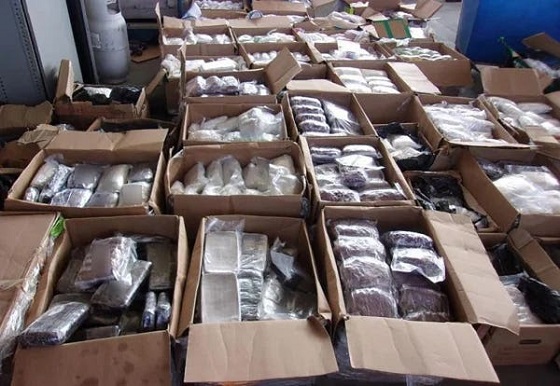Frontier Centre for Public Policy
Next government MUST reduce the size of bureaucracy: Preston Manning

From the Frontier Centre for Public Policy
By David Leis
Preston Manning: “Competence and ability, not ideology, should be the core criteria for hiring civil servants”
Federal Government’s Bloated Bureaucracy Needs an Immediate Overhaul
I recently had the pleasure of speaking with the Honourable Preston Manning about the ever-growing size of Canada’s federal bureaucracy. Manning, a seasoned politician with an impressive legacy of public service, recently wrote a compelling column urging the next government to rein in the federal bureaucracy.
Our conversation highlighted the need for a strategic approach to managing the state’s size and ensuring efficient and effective government operations and democratic accountability. This issue is relevant to Canadians as the size of government in Canada continues to increase at historic levels and acts as a major impediment to our nation’s productivity, standard of living and quality of life.
The size of the state has also led to a change in our culture. Some assume that the government will do everything, which, of course, has never worked.
During our conversation, Manning highlighted the dramatic growth of the federal civil service, which has nearly doubled during the Trudeau years. This expansion, he said, poses a significant challenge for any new government trying to control this vast machinery by elected representatives. His central argument was clear: a new government must be prepared with a solid plan to manage and, where necessary, reduce the federal bureaucracy’s size to ensure its effectiveness and that it serves the needs of Canadians.
One of his primary suggestions was a return to merit-based hiring. The current emphasis on diversity, equity, and inclusion, he pointed out, sometimes comes at the expense of efficiency and effectiveness. While acknowledging the importance of a diverse workforce, Manning stressed that competence and capability, not ideology, should be the core criteria for hiring civil servants. This approach, he said, would ensure that the government is staffed by professionals who can deliver high-quality public services.
Privatization also came up as a key theme in our conversation. Manning pointed out that certain government functions could be better managed by the private sector. He said that by contracting out services that the private sector can deliver more cost-effectively, the government can reduce its size and focus on its core responsibilities. This shift would not only decrease public expenditure but also enhance the efficiency of service delivery to the public.
We also discussed the issue of federal encroachment into provincial jurisdictions and the need for it to focus on its own responsibilities, many of which are underperforming. The Trudeau government has been overstepping its constitutional boundaries in areas like healthcare, natural resources, and municipal governance. By respecting provincial jurisdictions, the federal government could reduce its role and the size of its bureaucracy while empowering those levels of government closer to the people. This decentralization would enable the provincial governments to manage their affairs more effectively, leading to a more balanced and efficient federation.
Building public support for reducing the size of the government was another crucial point in our conversation as Canadians struggle with high taxation and affordability. Survey after survey suggests a low level of trust in government as they witness high levels of deficits and debt as their standard of living continues to fall. Manning pointed out that, during the formation of the Reform Party, there was initially little public support for balancing the budget. However, through persistent efforts, public awareness and support for fiscal responsibility significantly increased. Similar efforts are needed today, he said, to educate the public about the importance of controlling government size and spending to serve Canadians better.
Our conversation also delved into the rule of law and the need for greater transparency to the public to ensure stronger accountability. Canada has one of the most secretive approaches to handling government documents in the Western world. Many documents are held indefinitely when they should be released publicly. Ironically, this secrecy has created a challenge for historians who seek to research past government decisions and can find few original documents because they are not public.
Manning also recommended periodically reviewing programs and either renewing or discontinuing them based on their effectiveness. This approach, he said, would enhance accountability and prevent the perpetuation of ineffective programs that no longer serve any purpose.
A particularly striking part of our discussion was the concept of a vertical political culture, where an elite class wields significant power, often at the expense of ordinary citizens. Manning argued that this description of elites and power is more relevant today than the traditional left-right political spectrum. The public must elect representatives committed to empowering citizens rather than perpetuating elite control, particularly within a massive, complex state bureaucracy.
Manning urged voters to ask candidates specific questions about how they plan to reduce the size of the federal civil service and manage public spending. By holding elected officials accountable, citizens can ensure that their concerns are addressed and that the government remains responsive to their needs, he said.
My discussion with Preston Manning highlighted the urgent need for strategic planning and public engagement in managing the size of Canada’s federal bureaucracy to ensure democratic control. His call for a return to merit-based hiring, increased privatization, respect for provincial jurisdictions, and greater transparency offers a roadmap for a more efficient and effective government.
As Canada faces increasing fiscal challenges and public dissatisfaction, his insights provide a timely reminder of the importance of prudent governance and active citizenship.
First published by Troy Media here. , July 3, 2024.

David Leis is the Frontier Centre for Public Policy’s vice president for development and engagement and host of the Leaders on the Frontier podcast.
armed forces
Canada At Risk Of Losing Control Of Its Northern Territories

From the Frontier Centre for Public Policy
By Gerry Bowler
Canada has left the North wide open to foreign powers eager to grow their Arctic foothold
Canada is in danger of losing the Arctic because Ottawa has ignored the North for far too long.
The Canadian North makes up 40 per cent of our land mass and includes more than 19,000 islands in the Arctic Archipelago. Yet only about 120,000 people live across this enormous stretch of wilderness. Canada took control of the region in the late 19th century through territorial transfers from the Hudson’s Bay Company and the British Crown, one of the largest land transfers in history.
For decades afterward, the North received little federal attention. The Second World War briefly changed that, prompting construction of the Alcan Highway to Alaska and bringing new airfields and telephone lines.
The Cold War, along with the threat of Soviet bombers crossing the Pole, led to multiple radar lines. Still, Prime Minister St-Laurent admitted in the 1950s that Canadian governments had treated the North “in an almost continuing state of absence of mind.”
John Diefenbaker’s Progressive Conservative administration tried to reverse that neglect. In 1958, he told a Winnipeg audience: “I see a new Canada—a Canada of the North! … We intend to carry out the legislative program of Arctic research, to develop Arctic routes, to develop those vast hidden resources the last few years have revealed.”
Plans for a research and industrial city in Frobisher Bay, new roads and railway lines and wide-ranging surveys were ambitious but ultimately unaffordable. In the years that followed, both Liberal and Conservative governments again set northern development aside.
Foreign interest, however, continued to grow. The Canadian Security Intelligence Service recently reported Russian and Chinese attempts at influence and subversion in our northern territories.
American governments over the past 20 years have shown serious interest in the region’s resources, which include significant oil, gas and mineral deposits, along with control of the Northwest Passage, a shipping route becoming increasingly accessible as Arctic sea ice recedes.
Canada considers those waters national; the United States, the European Union and at times China argue it is an international strait.
For all practical purposes, Canada has what amounts to no meaningful presence north of the tree line, leaving the field open to countries with far more ambition and far better-equipped forces.
Canada is in no position to defend its claims. We have no icebreakers capable of operating through the Arctic winter. We have no submarines that can work under the ice cap. We have no permanent air base for fighter jets.
And to cover two million square kilometres of Arctic territory, we have only 300 troops stationed there. The chance they could detect, let alone repel, a serious intruder is essentially zero. Without these capabilities, Canada cannot properly monitor activity in the region or enforce its sovereignty claims.
In the last federal budget, Ottawa announced a $1-billion Arctic infrastructure fund for new airports, seaports and all-season roads. Our foreign affairs minister has urged NATO to pay more attention to the Arctic, saying it “must be an organization not only that focuses on the eastern flank, but also that looks north.”
These steps are gestures, not strategy. Canadian governments excel at promises but struggle with procurement, and the idea that European allies might fill the gap, considering their weak response to Russia’s assault on Ukraine, is unlikely.
Our northern territory is under threat. We must use it or lose it.
Gerry Bowler is a Canadian historian and a senior fellow of the Frontier Centre for Public Policy.
Crime
How Global Organized Crime Took Root In Canada

From the Frontier Centre for Public Policy
Weak oversight and fragmented enforcement are enabling criminal networks to undermine Canada’s economy and security, requiring a national-security-level response to dismantle these systems
A massive drug bust reveals how organized crime has turned Canada into a source of illicit narcotics production
Canada is no longer just a victim of the global drug trade—it’s becoming a source. The country’s growing role in narcotics production exposes deep systemic weaknesses in oversight and enforcement that are allowing organized crime to take root and threaten our economy and security.
Police in Edmonton recently seized more than 60,000 opium poppy plants from a northeast property, one of the largest domestic narcotics cultivation operations in Canadian history. It’s part of a growing pattern of domestic production once thought limited to other regions of the world.
This wasn’t a small experiment; it was proof that organized crime now feels confident operating inside Canada.
Transnational crime groups don’t gamble on crops of this scale unless they know their systems are solid. You don’t plant 60,000 poppies without confidence in your logistics, your financing and your buyers. The ability to cultivate, harvest and quietly move that volume of product points to a level of organization that should deeply concern policymakers. An operation like this needs more than a field; it reflects the convergence of agriculture, organized crime and money laundering within Canada’s borders.
The uncomfortable truth is that Canada has become a source country for illicit narcotics rather than merely a consumer or transit point. Fentanyl precursors (the chemical ingredients used to make the synthetic opioid) arrive from abroad, are synthesized domestically and are exported south into the United States. Now, with opium cultivation joining the picture, that same capability is extending to traditional narcotics production.
Criminal networks exploit weak regulatory oversight, land-use gaps and fragmented enforcement, often allowing them to operate in plain sight. These groups are not only producing narcotics but are also embedding themselves within legitimate economic systems.
This isn’t just crime; it’s the slow undermining of Canada’s legitimate economy. Illicit capital flows can distort real estate markets, agricultural valuations and financial transparency. The result is a slow erosion of lawful commerce, replaced by parallel economies that profit from addiction, money laundering and corruption. Those forces don’t just damage national stability—they drive up housing costs, strain health care and undermine trust in Canada’s institutions.
Canada’s enforcement response remains largely reactive, with prosecutions risk-averse and sentencing inadequate as a deterrent. At the same time, threat networks operate with impunity and move seamlessly across the supply chain.
The Edmonton seizure should therefore be read as more than a local success story. It is evidence that criminal enterprise now operates with strategic depth inside Canada. The same confidence that sustains fentanyl synthesis and cocaine importation is now manifesting in agricultural narcotics production. This evolution elevates Canada from passive victim to active threat within the global illicit economy.
Reversing this dynamic requires a fundamental shift in thinking. Organized crime is a matter of national security. That means going beyond raids and arrests toward strategic disruption: tracking illicit finance, dismantling logistical networks that enable these operations and forging robust intelligence partnerships across jurisdictions and agencies.
It’s not about symptoms; it’s about knocking down the systems that sustain this criminal enterprise operating inside Canada.
If we keep seeing narcotics enforcement as a public safety issue instead of a warning of systemic corruption, Canada’s transformation into a threat nation will be complete. Not because of what we import but because of what we now produce.
Scott A. McGregor is a senior fellow with the Frontier Centre for Public Policy and managing partner of Close Hold Intelligence Consulting Ltd.
-

 Daily Caller2 days ago
Daily Caller2 days agoTrump Gives Zelenskyy Until Thanksgiving To Agree On Peace Deal, With U.S. Weapons And Intel On The Line
-

 Daily Caller2 days ago
Daily Caller2 days agoBari Weiss Reportedly Planning To Blow Up Legacy Media Giant
-

 Health15 hours ago
Health15 hours agoTens of thousands are dying on waiting lists following decades of media reluctance to debate healthcare
-

 Business2 days ago
Business2 days agoI Was Hired To Root Out Bias At NIH. The Nation’s Health Research Agency Is Still Sick
-

 Carbon Tax19 hours ago
Carbon Tax19 hours agoCarney fails to undo Trudeau’s devastating energy policies
-

 Daily Caller2 days ago
Daily Caller2 days agoMTG Says She’s Resigning From Office
-

 International1 day ago
International1 day agoCanada’s lost decade in foreign policy
-

 Business15 hours ago
Business15 hours agoBudget 2025: Ottawa Fakes a Pivot and Still Spends Like Trudeau



